Best Mini-ITX Motherboards: Holiday 2013
by Ian Cutress on November 23, 2013 10:00 AM EST- Posted in
- Motherboards
- Mini ITX
- Holiday 2013
- Buyer's Guides

As part of a stream on holiday buying guides (Black Friday and jolly Noël around the corner), here is my take on the season’s mini-ITX offerings, covering both AMD and Intel. Ultimately mini-ITX is a small form factor that has a few manufacturers in competition for your money, and far fewer products than the ATX or micro-ATX mêlée that usually follows a platform launch. 17cm square is actually rather small to fit in all the goodies, but here are our picks both from reviews and other products we wish to review.
Intel and Z87 / Haswell
Having recently played with a handful of Z87 mini-ITX motherboards, and another couple in to review, there does seem to be developing a dichotomy within the pricing structure. These motherboards are either below the $150 margin to cover the cheaper builds, or ~$200 and up, designed to offer as much as possible in a small form factor.
Sub $150, ASRock Z87E-ITX: (Newegg, website)
For $140, ASRock gives a motherboard with dual band 802.11ac WiFi and six SATA 6 Gbps. In terms of our performance numbers in the review, we were impressed by both the audio codec performance and the overclocking performance, being able to squeeze 4.7 GHz from our i7-4770K without too much difficulty. ASRock are continually building a BIOS and software ecosystem around their product which is getting easier to use as well as being nice to look at. A few niggles (8-pin placement, only two fan headers) but a nice buy at $140.
Over $200, ASUS ROG Maximus Impact (Newegg, website)
The ASUS Maximus VI Impact comes in at $225, and at this price bracket there are only a couple of contenders but based on our reviews and past experience, arrows point towards the Impact.
For the extra green over the Z87E-ITX, there are four daughterboards: power delivery, Impact Control, SupremeFX audio and the mPCIe Combo II. This provides extra space on the PCB for all the ROG specific ICs and four 4-pin fan headers, as well as dual band 802.11ac, NGFF (M.2) support, appropriate power connectors and regular ROG features like ROG Connect, USB BIOS Flashback, MemOK!, DirectKey and the ROG_EXT header for the OC Panel. This builds on top of ASUS’ extensive BIOS options and software bundle, including Sonic Radar and RAMDisk, the new additions to the package.
Other Intel boards to consider ~$200: ASUS Z87I-Deluxe and MSI Z87I Gaming
Two motherboards on my plate to review over the next couple of months are going for the productivity and gaming crowds respectively. ASUS offer the Z87I Deluxe at $190 as the ROG alternative: similar in layout but using an onboard audio, no NGFF but 802.11ac, the same sort of power delivery and power connector locations but with six SATA 6 Gbps. It comes with the regular software/BIOS stack (SSD Secure Erase and RAMDisk are ROG Features) but still others like USB BIOS Flashback and ROG Connect are still there.
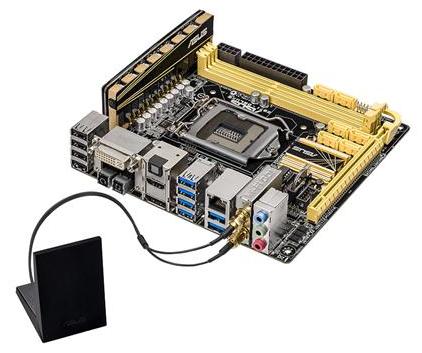
The other one on my to-review list has not been released yet, and while I will have one in for testing, we cannot publish any numbers yet. The MSI Z87I Gaming follows MSI Gaming line down the order to mini-ITX, with the focus going on audio and Killer network connectivity, along with the Dragon styling that has adorned their Gaming range up to this point.
We can see from the board that there are 5 SATA ports, a USB 3.0 port, and WiFi, which I am told is definitely a dual band 802.11ac solution. The audio is also showing the ‘Audio Boost’ logo, so I want to assume that there is a Realtek ALC1150 powering the sound. MSI are aiming for a $200 launch price, but December the 4th will reveal all.
AMD Motherboards: FM2+ <3 APU
With A88X based FM2+ motherboards here with us more or less, Kaveri processors are absent. When they around the corner, does it make sense to recommend any FM2 motherboards at this point? The truth of the matter is, AMD announced that the APUs will be in the hands of retailers on January 14th, just after for the Las Vegas Consumer Electronics Show, so if you want a mini-ITX AMD system today, FM2+ might have something you need which you can upgrade later. Two motherboards have caught my eye over the year.
ASRock FM2A88X-ITX+ (Newegg, website), $100
The A88X model from ASRock is the one up from the A85X model earlier in the year that caught my eye but I unfortunately did not have time to review. Using a rather unconventional orientation due to the size of the AMD socket, there is a set of six SATA ports, HDMI-In, dual band Atheros AR8171 802.11n, Realtek ALC1150 audio and the regular usual ports for A88X. Due to the orientation, the 24-pin ATX power connector is in a decent place, but the 4-pin might be tricky with larger GPUs. At this point in time I am a fan of ASRock’s BIOS and software ecosystem, which is always a plus.

Gigabyte F2A88XN-WiFi (Newegg, website), $110
For Gigabyte’s A88X motherboard, they have used a regular orientation for the CPU, and on the hardware front compared to the ASRock have fitted the motherboard with dual band 802.11ac in exchange for a couple of SATA 6 Gbps ports and using a Realtek ALC892 over an ALC1150. Gigabyte’s solution has a dual HDMI output and their dual BIOS system which features across the range.
Picking the Right Mini-ITX for the Holidays
Reviewing mini-ITX motherboards could be a full-time occupation in itself. In this small guide, I unfortunately have not had time to touch on and H87, B85 or H81 offerings, all of which offer something simple to plug and play, or perhaps a specific feature (parallel port, serial port) that might be relevant to your workload. There are a few holes in the market that a company could pick up (AMD mini-ITX gaming), but I am glad that the march to better wireless connectivity on these smaller form factor system. Happy holidays!


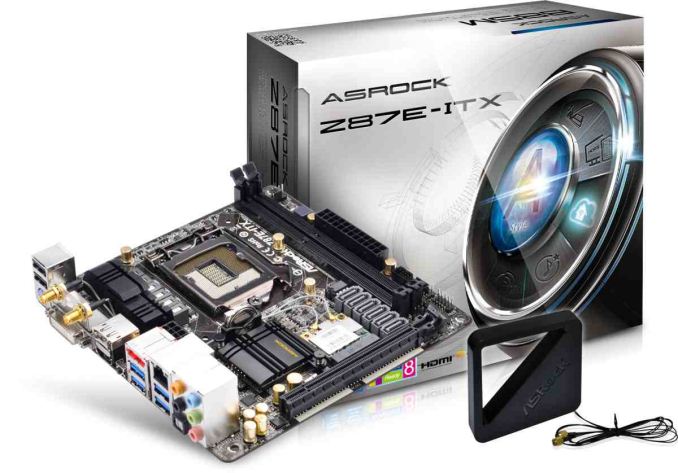
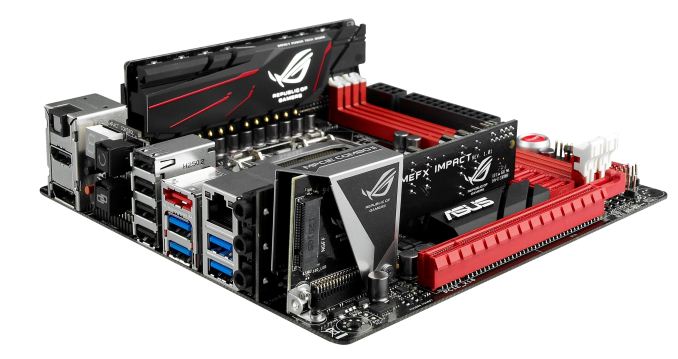
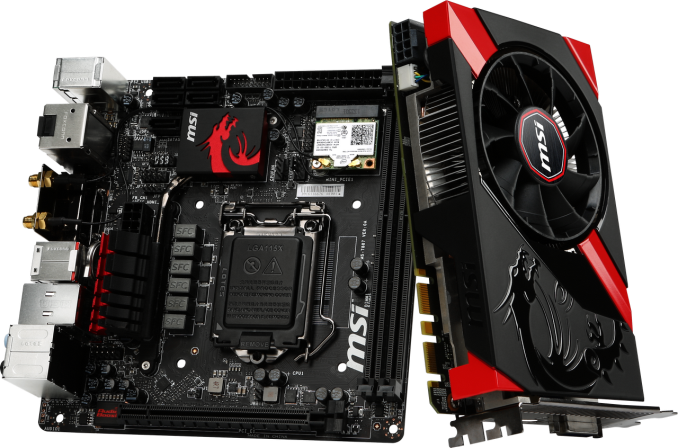
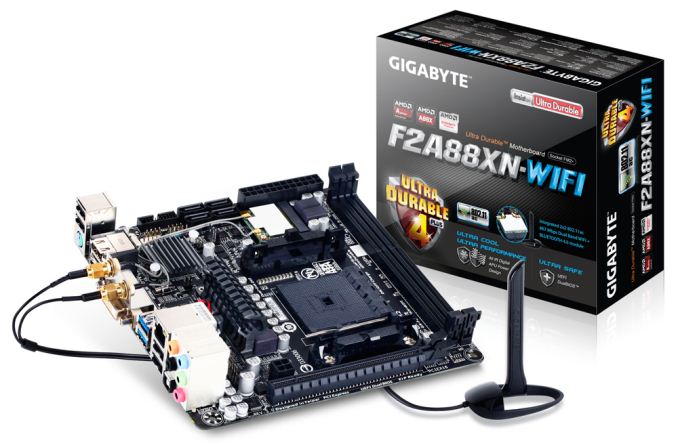








34 Comments
View All Comments
haakon_k - Sunday, November 24, 2013 - link
*typo's; ...case formats you could end _up_ withDoes anyone _think_ that a riser..
haakon_k - Sunday, November 24, 2013 - link
damn, that riser idea of mine would make the outputs on opposite sides with otherwise standard formats. Running back to hide under my desk and think.JoanSpark - Thursday, November 28, 2013 - link
..some people on Hardforums/SFF-section are going after that idea.. personally I don't think it's worthwhile, unless you want some AV resembling case fitting into your living room rack.Anyhow, get involved ^^
vortexmak - Saturday, November 23, 2013 - link
What about the Gigagbyte Z87 ITX board ?Though I am going in for the ASRock, already got an i74770k
MethylONE - Saturday, November 23, 2013 - link
I am currently using the ASRock FM2A88X-ITX+ and so far, so good. I'm not a fan of the 5ghz performance of the chosen WiFi, it is far below the Intel NIC I have in my laptop. 2.4ghz is great though.Overclocking is well beyond what I expected. I bought an A6-6400K as a placeholder for Kaveri and it runs at 5Ghz all day with the stock cooler. I don't run it there, it runs at 4.8Ghz 'Turbo' right now, but I can just switch to 'performance mode' when I want the boost. Updating the BIOS is simple. All good so far, in January we'll see if I'm still happy.
coolhund - Sunday, November 24, 2013 - link
I highly recommend the Z87E-ITX too. It has the perfect layout for an ITX system and the UEFI is very nicely done. Pretty stable so far too.I cant recommend Asus board anymore at all. I had so many problems with them dying the typical Asus-death (black screen, spinning fans), then I finally decided to try one again since it fit my needs the most from all others, and guess what? 1.5 years later it also died exactly like that again, again with no apparent reason.
Gigabyte, MSI, those have never disappointed me, and I hope with my first ASrock one in quite some time, I hope they have become as good as people say (though people also say Asus is awesome). Guess I have to find out by myself again, but as I said, its very promising so far, and ASRock shows some real innovation on their Mainboards. So many nice things, where you notice they have really thought a lot about that.
Anyway, as I already pointed out in the comments of the Z87E-ITX review, watch out if you want to use a PicoPSU. They often wont fit reliably on newer ITX boards, because of the placement of the connector/RAM banks (they put a lot of pressure on one of the installed RAM bars). Gotta look closely before you buy!
Xpl1c1t - Monday, November 25, 2013 - link
My DFI P55 MI-T36 is still happily running just fine for everything I do with it. Could be happier with my decision 3 years ago to adopt the Mini-itx form factor as having a 7liter volume case is just sweet. Even with a 160watt PSU, my i5-750 can hum along at 2.56Ghz with a .995Vcore, and Palit's low profile GTS 450 @ 1Vcore stock clocks gets through modestly in even some modern games. I really love the form factor refocusing in this industry and am extremely excited to eventually witness small form factors like pico-itx host modern processors like upcoming APUs from AMD and Intel. Cheers! Thanks Anandtech. Happy HolidaysHrel - Monday, November 25, 2013 - link
What's that other card shown in the picture for the MSI gaming board? A sound card?Hrel - Monday, November 25, 2013 - link
it looks like a GPU but I can't think of any reason why a GPU would be in the pic...JoanSpark - Monday, November 25, 2013 - link
it's a new combo by MSI.. a GTX 760 GPU card probably within PCIe full height, half length spec, similar in size to the offerings by Asus (122mm high) & Zotac (111mm high).Me and probably 100-thousand more wish they'd go for a 780 in that size though ;-)
Would probably need to cut off the power/voltage part on those 10" card and mount it somewhere else (Asus sub-board style) closer to the I/O panel.
Then in triple slot so you got some space for the air exhausting to the rear and voila, a triple slot, full height, half length GTX 780 for mITX.
One can dream.. :-)